 European mobile phone users are far more likely to use their handsets to access the web than their US counterparts, according to a new comScore Networks study.
European mobile phone users are far more likely to use their handsets to access the web than their US counterparts, according to a new comScore Networks study.
The comScore Mobile Tracking Study revealed significant differences between Europeans and Americans, with 29 percent of Europeans regularly getting online with their mobile phones compared to just 19 percent in the U.S
Breaking the European figures down, over a third (34 per cent) of Germans and Italians use their phones to access the web, followed by France with 28 percent, Spain with 26 percent and the UK with 24 percent, compared to just 19 percent for the USA.
The comScore Mobile Tracking Study also showed that geezers are more likely to access the Web from their mobile phones than women (probably looking for football scores, pubs and pr0n).
Nokia proved to be the most popular phone in Europe for accessing the web, bagging a market share ranging from 50 percent in Italy to 22 percent in France.
In the States, Motorola pushed ahead with 26 percent of the market compared to second-placed Nokia’s 17 percent share.
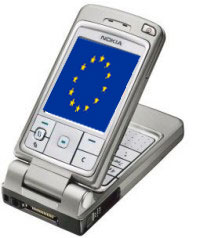 Portal sites were the most popular destinations for mobile surfers, with Google, Yahoo! and MSN leading the way, with branded Web sites set up by the phone operators, such as Vodafone, o2 and T-Mobile also proving a hit.
Portal sites were the most popular destinations for mobile surfers, with Google, Yahoo! and MSN leading the way, with branded Web sites set up by the phone operators, such as Vodafone, o2 and T-Mobile also proving a hit.
“Three-quarters of American mobile Web surfers access content from the leading online portals such as Google, Yahoo! and MSN compared to only thirty percent of Europeans,” observed Bob Ivins, the big cheese of comScore Europe.
“In Europe, the mobile Internet appears to mirror the dynamics of the fixed Internet,” said Ivins.
“Google remains strong but the other U.S.-based portals achieve much lower penetration, facing stiff competition from local competitors – in this case the mobile providers – who have the structural advantage of a degree of control over the access point and interface from the mobile phone,” he added.
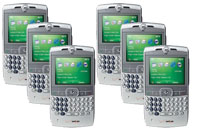 As the smartphone market continues to explode, Microsoft has revealed its bullish ambitions to keep on doubling sales, year on year.
As the smartphone market continues to explode, Microsoft has revealed its bullish ambitions to keep on doubling sales, year on year.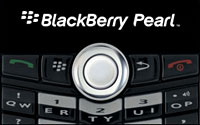 According to research firm
According to research firm 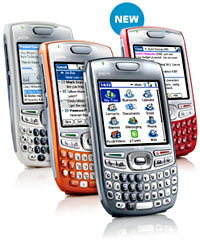 It looks like the smartphone market is going to heat up in coming months too, with Research In Motion’s new
It looks like the smartphone market is going to heat up in coming months too, with Research In Motion’s new 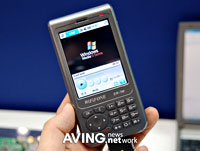 Currently causing something of a stir on the floor of the Korea Electronics Show is the WiFiFone EW-700, a Wi-Fi-enabled VoIP smartphone running Windows Mobile.
Currently causing something of a stir on the floor of the Korea Electronics Show is the WiFiFone EW-700, a Wi-Fi-enabled VoIP smartphone running Windows Mobile.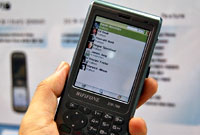 The EW-700, looks a fairly plain, clunky beast too – in fact the photos we’ve seen have something of a pre-production air to them – but it’s not short of features.
The EW-700, looks a fairly plain, clunky beast too – in fact the photos we’ve seen have something of a pre-production air to them – but it’s not short of features.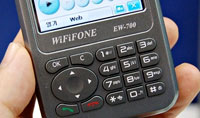 We’re yet to get full specs either, but the screen looks like a 320 x 240 pixels jobbie to us, and there’s also a 2-megapixel camera with camcorder function onboard, a voice recorder, hardware MPEG engine offering full frame video and Wi-Fi and infrared connectivity.
We’re yet to get full specs either, but the screen looks like a 320 x 240 pixels jobbie to us, and there’s also a 2-megapixel camera with camcorder function onboard, a voice recorder, hardware MPEG engine offering full frame video and Wi-Fi and infrared connectivity.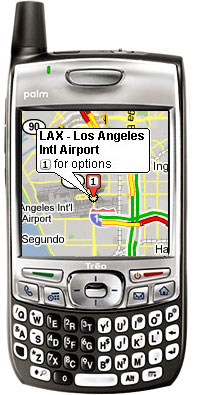 Although it was announced as part of the forthcoming Palm Treo 680 smartphone package, Google has already made its Google Maps application available for free download.
Although it was announced as part of the forthcoming Palm Treo 680 smartphone package, Google has already made its Google Maps application available for free download.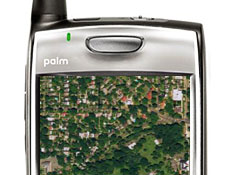 Clicking on an icon provides more address information and a button to phone them up, as well the ability to get turn by turn driving directions to and from any given point.
Clicking on an icon provides more address information and a button to phone them up, as well the ability to get turn by turn driving directions to and from any given point.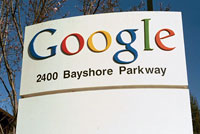 Google is converting its Californian headquarters to run partly on solar power, creating the largest solar installation on any corporate campus in the United States.
Google is converting its Californian headquarters to run partly on solar power, creating the largest solar installation on any corporate campus in the United States.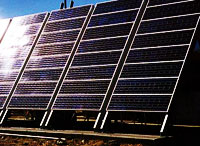 Google haven’t disclosed the costs of the project, but it’s unlikely to cause much of a dent in the pockets of a company reputed to have nearly $10 billion in the corporate coffers.
Google haven’t disclosed the costs of the project, but it’s unlikely to cause much of a dent in the pockets of a company reputed to have nearly $10 billion in the corporate coffers.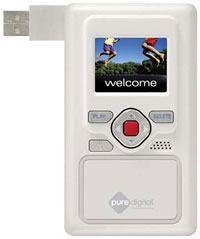 Pure Digital Technologies has announced a cheapo camcorder that can upload movies to video sharing Web sites like Google Video with a single click.
Pure Digital Technologies has announced a cheapo camcorder that can upload movies to video sharing Web sites like Google Video with a single click. Allen Weiner, an analyst with market tracker Gartner, reckoned Pure Digital were on to a winner, describing the pint-size camcorder as “simple, but also revolutionary.”
Allen Weiner, an analyst with market tracker Gartner, reckoned Pure Digital were on to a winner, describing the pint-size camcorder as “simple, but also revolutionary.” Unhappy with the inaccuracies of the online encyclopaedia he set up, Wikipedia co-founder Larry Sanger has announced that he will be launching an alternative to the free online reference this week.
Unhappy with the inaccuracies of the online encyclopaedia he set up, Wikipedia co-founder Larry Sanger has announced that he will be launching an alternative to the free online reference this week.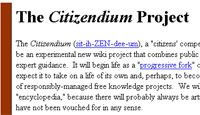 Such is the explosive growth of the site, this figure represents a whopping 162 percent rise from the same period last year.
Such is the explosive growth of the site, this figure represents a whopping 162 percent rise from the same period last year.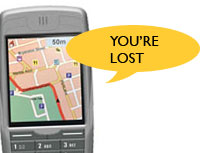 A new survey of over 1,000 early adopters and mobile phone business users discovered little enthusiasm for mobile video but a keen interest in using handsets as navigation aids.
A new survey of over 1,000 early adopters and mobile phone business users discovered little enthusiasm for mobile video but a keen interest in using handsets as navigation aids.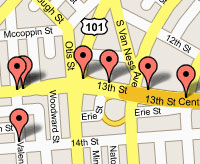 Commenting on the low uptake of value-added 3G services, Chamberlain suggested that customers were reluctant to part with their hard-earned just to watch juddery little video clips of “yesterday’s ballgame” on the squinty displays of smartphones.
Commenting on the low uptake of value-added 3G services, Chamberlain suggested that customers were reluctant to part with their hard-earned just to watch juddery little video clips of “yesterday’s ballgame” on the squinty displays of smartphones. If the findings of the In-Stat survey prove to be representative of the population as a whole, it looks like mobile phone carriers are going to have to shuffle around their ranges of phones currently being offered, and give GPS-enabled phones a bigger push (or look to include more mobile navigation apps like Google Maps).
If the findings of the In-Stat survey prove to be representative of the population as a whole, it looks like mobile phone carriers are going to have to shuffle around their ranges of phones currently being offered, and give GPS-enabled phones a bigger push (or look to include more mobile navigation apps like Google Maps). Yahoo execs have pressed the flesh and struck up a deal with CBS owned-and-operated television stations to exclusively broadcast local news videos online.
Yahoo execs have pressed the flesh and struck up a deal with CBS owned-and-operated television stations to exclusively broadcast local news videos online.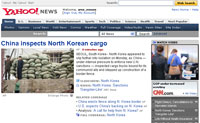 “Local news has become one of the most important pieces of a user’s online news experience, and this agreement brings some of the best local TV journalism to the millions of Yahoo News users,” said Scott Moore, head of news and information, Yahoo Media Group.
“Local news has become one of the most important pieces of a user’s online news experience, and this agreement brings some of the best local TV journalism to the millions of Yahoo News users,” said Scott Moore, head of news and information, Yahoo Media Group. Mobile phone giant Vodafone has unwrapped its winter collection of phones which it hopes will work their way into Santa’s sack.
Mobile phone giant Vodafone has unwrapped its winter collection of phones which it hopes will work their way into Santa’s sack. The full range adds up to no less than 24 Vodafone Live with 3G handsets featuring onboard mobile TV; 14 Vodafone Live with 3G handsets featuring Vodafone Radio DJ music service and six 3G broadband handsets – sourced from Motorola and Samsung – delivering HSDPA.
The full range adds up to no less than 24 Vodafone Live with 3G handsets featuring onboard mobile TV; 14 Vodafone Live with 3G handsets featuring Vodafone Radio DJ music service and six 3G broadband handsets – sourced from Motorola and Samsung – delivering HSDPA.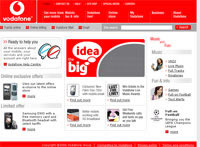 By comparison, existing 3G networks can only muster up a comparably sloth-like rate of just 384 kilobits per second.
By comparison, existing 3G networks can only muster up a comparably sloth-like rate of just 384 kilobits per second.